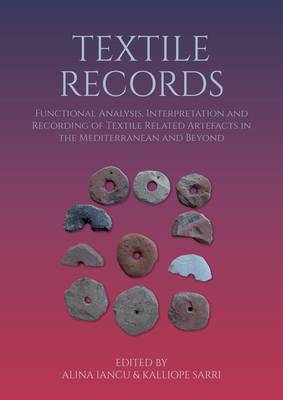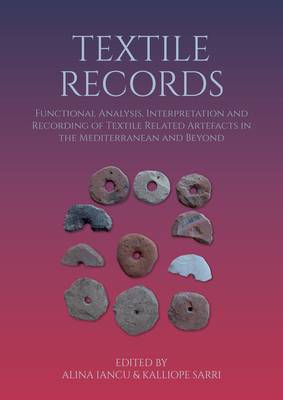
- Afhalen na 1 uur in een winkel met voorraad
- Gratis thuislevering in België vanaf € 30
- Ruim aanbod met 7 miljoen producten
- Afhalen na 1 uur in een winkel met voorraad
- Gratis thuislevering in België vanaf € 30
- Ruim aanbod met 7 miljoen producten
Zoeken
Textile Records
Functional Analysis, Interpretation and Recording of Textile Related Artefacts in the Mediterranean and Beyond
€ 121,45
+ 242 punten
Omschrijving
Examines prehistoric and ancient textiles, their archaeological evidence, and proposes improved methods for recording and publishing findings.
Since early prehistoric times textiles have been a necessity for daily protection, social display, home furnishing, transportation, war logistics and various other purposes. Even though textiles only survive under extreme environmental conditions, many archaeological finds bear witness to these indispensable goods as well as to the craft itself. Finds such as fragmentary preserved fabrics, textiles mineralised on metal objects, carbonised fibres and textile imprints provide data on the quality and type of materials and techniques used to produce textiles in the past. In addition, a wealth of tools offer insights into the technologies used by prehistoric and ancient craftspeople to process the raw fibres into finished textile products. Even though textiles were crucial to past societies, they are less represented in archaeological publications than other finds. One of the reasons for this could be their gender-specific character. For decades, they were thought to be the result of a modest domestic craft, mainly practised by women. Other reasons are the general lack of interest in the subject and the lack of knowledge about such objects. As a result, the publication of textiles and textile-related tools is still prone to confusion and misinterpretation. Recent advances in the field of archaeological textiles provide good reasons for a reassessment of the old literature and for an in-depth analysis of how professionals in archaeology might approach and better publish textile-related artefacts in the future. This volume brings together archaeologists and other textile experts to share their insights into the history of recording textile artefacts, and to suggest new methodologies to integrate these finds into general archaeological publications and disseminate them to the broad public with the same consistency as other finds.
Since early prehistoric times textiles have been a necessity for daily protection, social display, home furnishing, transportation, war logistics and various other purposes. Even though textiles only survive under extreme environmental conditions, many archaeological finds bear witness to these indispensable goods as well as to the craft itself. Finds such as fragmentary preserved fabrics, textiles mineralised on metal objects, carbonised fibres and textile imprints provide data on the quality and type of materials and techniques used to produce textiles in the past. In addition, a wealth of tools offer insights into the technologies used by prehistoric and ancient craftspeople to process the raw fibres into finished textile products. Even though textiles were crucial to past societies, they are less represented in archaeological publications than other finds. One of the reasons for this could be their gender-specific character. For decades, they were thought to be the result of a modest domestic craft, mainly practised by women. Other reasons are the general lack of interest in the subject and the lack of knowledge about such objects. As a result, the publication of textiles and textile-related tools is still prone to confusion and misinterpretation. Recent advances in the field of archaeological textiles provide good reasons for a reassessment of the old literature and for an in-depth analysis of how professionals in archaeology might approach and better publish textile-related artefacts in the future. This volume brings together archaeologists and other textile experts to share their insights into the history of recording textile artefacts, and to suggest new methodologies to integrate these finds into general archaeological publications and disseminate them to the broad public with the same consistency as other finds.
Specificaties
Betrokkenen
- Uitgeverij:
Inhoud
- Aantal bladzijden:
- 224
- Taal:
- Engels
- Reeks:
Eigenschappen
- Productcode (EAN):
- 9798888572139
- Verschijningsdatum:
- 17/07/2026
- Uitvoering:
- Hardcover
- Formaat:
- Genaaid
- Afmetingen:
- 216 mm x 279 mm

Alleen bij Standaard Boekhandel
+ 242 punten op je klantenkaart van Standaard Boekhandel
Beoordelingen
We publiceren alleen reviews die voldoen aan de voorwaarden voor reviews. Bekijk onze voorwaarden voor reviews.










